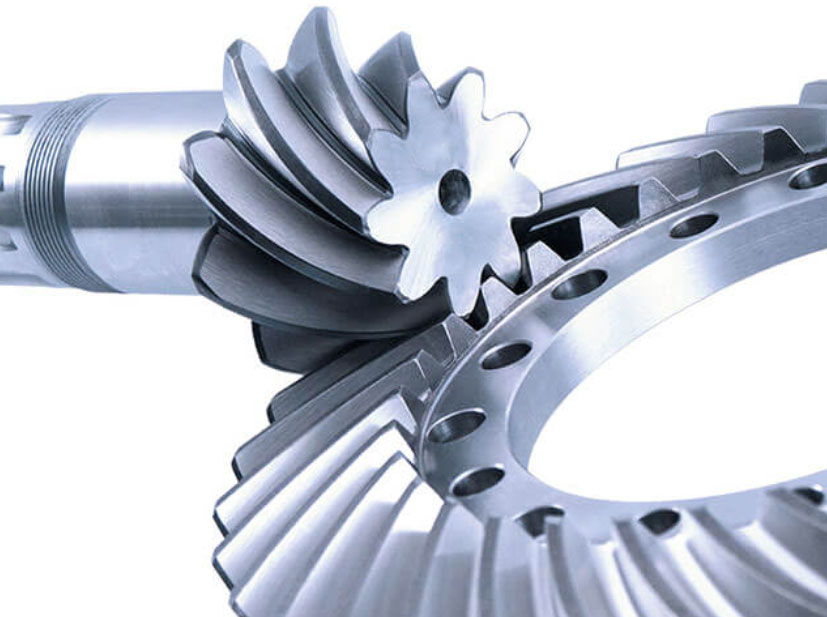
Spiral bevel gears are a type of bevel gears characterized by their helical tooth profile, which sets them apart from straight bevel gears. They are designed to transmit power between intersecting shafts at right angles efficiently. Let’s take a closer look at the design and functionality of spiral bevel gears:
1. Tooth Profile and Design:
The most distinctive feature of spiral bevel gears is their helical tooth profile. Each gear has curved teeth that spiral around the gear’s axis, creating a helix angle. The tooth profile is based on a logarithmic spiral, which allows for smooth and gradual tooth engagement during meshing.
2. Tooth Contact Pattern:
During meshing, the contact between the gear teeth begins at one end of the tooth and gradually progresses across the entire tooth face. This continuous tooth engagement results in a larger contact area compared to straight bevel gears, improving load distribution and reducing contact stresses.
3. Helix Angle:
The helix angle is the angle between the tooth helix and the gear axis. It is a key design parameter that affects the gear’s characteristics, including noise, efficiency, and load-carrying capacity. The helix angle also determines whether the spiral bevel gear is a left-hand or right-hand gear.
4. Axial Thrust Balance:
Spiral bevel gears are designed to balance axial thrust forces during operation. This feature ensures that the axial thrust is evenly distributed across the gear teeth, reducing the need for additional thrust bearings and simplifying gear assembly.
5. Smooth and Quiet Operation:
The helical tooth design of spiral bevel gears allows for gradual tooth engagement and a rolling action during meshing. This smooth operation reduces noise, vibration, and impact forces, resulting in quieter gear operation.
6. High Load-Carrying Capacity:
The larger contact area and gradual tooth engagement of spiral bevel gears allow them to handle substantial loads. This makes them suitable for heavy-duty applications that require reliable power transmission and high torque capacity.
7. Efficiency:
The helical tooth profile and smooth tooth engagement contribute to higher gear efficiency compared to straight bevel gears. The reduced friction during meshing leads to improved energy efficiency and lower power losses.
8. Application-Specific Design:
Spiral bevel gears are custom-designed for specific applications, considering factors such as torque requirements, speed ratios, space constraints, and noise considerations. This allows engineers to tailor the gear design to meet the unique needs of the machinery.
9. Precision Manufacturing:
The manufacturing of spiral bevel gears involves high-precision processes, including CNC machining and gear grinding, to ensure accurate tooth profiles and tight tolerances.
10. Versatility:
Spiral bevel gears find applications in various industries, including automotive, aerospace, robotics, and marine. Their versatility makes them suitable for a wide range of power transmission needs.
Spiral bevel gears’ helical tooth profile and advanced design features make them efficient, durable, and versatile components in modern mechanical systems. Their smooth operation, high load-carrying capacity, and quiet performance make them a preferred choice in applications where precision motion control and reliable power transmission are essential.
